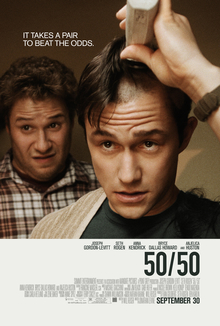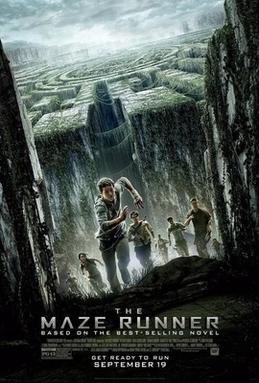Nobody asked for it, but here’s mini-reviews of the
last 10 films I saw at TIFF. At the end is my list of must-see films and those that are well worth your time.
____________________________________________________
Two
Days, One Night
Directed
by Luc and Jean-Pierre Dardenne and staring Marion Cotillard, I had high hopes
going into Two Days, One Night. I knew it was about a woman who must convince
her coworkers to keep her job at the expense of everyone’s bonus, but what I
didn’t realize was that the battle would be as much against the woman’s own
depression as her coworkers.
Unfortunately for the film, I’ve been helping someone close to me battle
their own depression, and this trip was supposed to be a much-needed break from
all that. So, I wasn’t into this film,
and it’s entirely not the film’s fault.
Looking
at the film as objectively as I can, it is effective in getting us behind
Cotillard’s Sandra. She seeks out each
coworker individually, and although the conversations threaten to become
repetitive, you slowly begin to notice the subtle changes in each interaction. Through this, you’re able to track Sandra’s
precarious mental state, which is actually portrayed rather subtly. While that’s a nice change-up from the more
grandiose depictions of the illness, but it never rang true to me. It was all just a bit too neat for my taste.
____________________________________________________
Far
From Men
I’ve
only read one book by Albert Camus (The
Stranger), but that was enough to clue me in that this movie, based off a
Camus short story, would be a challenging piece of work. It didn’t fail me, delivering a stubbornly
complex depiction of two men caught up in the Algerian War. Touching on issues of ethnic misunderstanding
and the far-reaching effects of war, Far
From Men gives rich material to its leading duo, played spot-on by Viggo
Mortensen and Reda Kateb. As is common
with movies that expand upon short stories, there is some fat that could be
chewed off, but as a whole the film plays out as a delicately balanced slow
burn. As important as its script or its
actors is its cinematography, used here to convey the emotional lives of the
two reticent men. Algeria appears rough,
unforgiving, and undeniably beautiful in this elegantly shot, thought provoking
piece.
____________________________________________________
Mommy
A
winner of the Special Jury Prize at Cannes, Mommy
is filled with daring choices, from the 1:1 screen ratio, the prominent use of
familiar pop songs, and the introduction of a world exactly like our own, only
with one small legal change. That last
one might not seem very daring, but when you realize how subtly it changes the
world around these particular characters, the fact that the legal change is only
explained in the beginning and never mentioned again is extraordinary. In fact, it’s remarkable how much of the film
revolves around things unsaid when you take into account the verbosity of two
of its leads. The mother-son pair at the
center of Mommy are rough, unrefined
people, although the son proves to be the more volatile of the two. Their neighbor, for reasons only vaguely
stated but emotionally understood, becomes enmeshed in their family, and the
two women struggle together to correct the path of the troubled son. The film doesn’t demonize any of the
characters, no matter how many wrong turns they make, and lovingly shows the
way that families can be made and broken.
This was the only film I’ve seen all year to achieve what Roger Ebert
called elevation, to the tune of Oasis’s growling Wonderwall. Unfortunately, this
film just misses all-time greatness with an ending that seems unsure of when to
stop.
____________________________________________________
Bang
Bang Baby
Bang Bang Baby is your average 1960s
sci-fi musical, by which I mean, it’s one of the most original movies I’ve ever
seen. At first, it’s seemingly about a
saccharine young woman named Stepphy in small-town Canada who dreams of
becoming a singer. Then a mysterious
purple fog is released, and while the townsfolk mutate around her, Stepphy’s
idol miraculously gets stuck at her home and falls in love with her. And you caught that this is all a musical,
right? Stylized to the max, the film is
intentionally unrealistic, bathing the actors in light and surrounding them
with lush production designs that rival anything seen in Willy Wonka’s factory. But don’t let the film fool you; there’s a
darkness underlying everything, and if the ending means what I think it does,
then this is an extraordinarily sad story.
The style was too much for my taste, but I was certainly never bored by this
one.
____________________________________________________
Tales
of the Grim Sleeper
If
you’re like me, then you’ve never heard of the Grim Sleeper before, but fear
not, the film gives an overview of the serial killer’s crimes. Okay, maybe fear some, but not for this
film. Made by accomplished documentarian
Nick Broomfield, Tales of the Grim
Sleeper explores the streets of south central LA, delving into how this
killer was able to remain active for 25 years.
Broomfield and his team talk with friends and family of the accused, neighbors,
community activists, and eventually land in the care of a former prostitute named
Pam, whose big personality and street connections make the investigation bound
along quickly. Given the material, this
a remarkably funny film (thanks Pam), and the methods it uses to lay out its
findings are beyond reproach.
Unfortunately, the answers they find are nothing new, and even though
their effects are despicable, it leaves the film lacking a punch.
____________________________________________________
Revenge
of the Green Dragons
Based
on the true story of a 1980’s Chinese street gang, Revenge of the Green Dragons fits comfortably next to every other
gangster movie you’ve ever seen. A young
kid is lured into the gang’s web, grows up in its twisted world, and comes to
discover how treacherous and unromantic the life really is. Dragons
is entirely competent: well-filmed, well-acted,
etc. This makes it even more disappointing that the filmmakers didn’t reach for
more. Frankly, I’m tired of these
violent, troubled men movies. There’s a
million of them, with more being made every day, so settling for the basics isn’t
going to impress me. But hey, Harry Shum
Jr. from Glee does shoot people. Didn’t see that coming.
___________________________________________________
Elephant
Song
Adapting
a play can be treacherous, what with the small settings, limited number of
actors, and the generally wordy screenplays.
Any small mistake can become amplified, as they have nowhere to hide. Director Charles Binamé expertly handles
these complications, turning in a tense cat-and-mouse game between a mentally
ill but highly intelligent young man and the psychiatric staff trying to
discover the whereabouts of a missing colleague. The young man clearly knows something, but he’d
rather wheedle away at the vulnerable staff than give up the goods. The central trio, played by Xavier Dolan,
Bruce Greenwood, and Catherine Keener, are well-cast, more than capable of
handling the loaded dialogue they must quickly spit out. Kudos also to the cinematography, which employs
inventive framing to keep the visuals as interesting as the story.
___________________________________________________
The
Voices
Everyone’s
favorite director/graphic novelist Marjane Satrapi worked from someone else’s
material for the first time in The Voices,
a dark, weirdly funny story that will appeal to those who enjoyed 2012’s Cabin in the Woods. Ryan Reynolds stars as Jerry, a sweet but
troubled man who has conversations with his cat Mr. Whiskers, his dog Bosco,
and the human heads he keeps stored in the fridge. Much credit has to go to screenwriter Michael
R. Perry, who manages to make Jerry likable despite his homicidal streak. With much of the story being filtered through
Jerry’s skewed perception, Satrapi is able to play with the visuals, jumping
between what Jerry sees and the reality of his situation to hilarious
effect. This is an empathetic film, but
first and foremost it’s insanely funny.
My major take-away from it: never
trust Mr. Whiskers.
___________________________________________________
Laggies
Another
director doing a bit of a change-up is Lynn Shelton, whose films are known for
being highly improvised, but here worked with a set script. Starring Kiera Knightly as Megan, Laggies is about a young adult who never
quite grew up. Sure, she has a master’s
degree, but she’s spinning a sign outside her father’s business for money and
clearly lagging behind her friends maturity-wise. She ends up hanging out with a group of
teenagers led by Chloë Grace Moretz, which inadvertently jumpstarts Megan’s
life. The premise sounds like something
out of the Judd Apatow machine, but that version would have starred a man and
been filled with poop jokes. Instead,
Shelton and writer Andrea Seigel create a feel-good, almost fairy tale world,
gifting their main character with the space she needs to grow. Knightly, Moretz, and co-star Sam Rockwell
keep you invested in the slightly silly story, and there’s enough good-natured
humor peppered in to leave you smiling as you leave the theater.
___________________________________________________
The
Wanted 18
Here’s
an imperfect but charmingly odd documentary.
At only 75 minutes, The Wanted 18
is a brisk little story of the First Palestinian Intifada, an unarmed civilian insurgency
in Israel during the late 80’s and early 90’s.
And who are the titular wanted 18?
Cows, of course. You see, the
activists were trying to become self-sufficient, and brought in 18 cows to
start producing their own milk. This led
to the cows being targeted by the Israeli military, a weird footnote in an
otherwise dreary conflict. Told using
interviews, recreations, and stop-motion animation, the film starts out
embracing its oddity but ends up losing its sense of humor under the weight of
it’s serious backdrop. I wish it had
kept the lighter tone, because as the film becomes more and more serious, it
falls back on talking heads and visually uninteresting storytelling.
___________________________________________________
My must-sees from the festival: Mommy,
The Voices, Love & Mercy, The Keeping Room
Well worth your time: Tour de
Force, Cake, Far From Men, Laggies, Elephant Song, Tales of the Grim Sleeper,
Life in a Fishbowl




